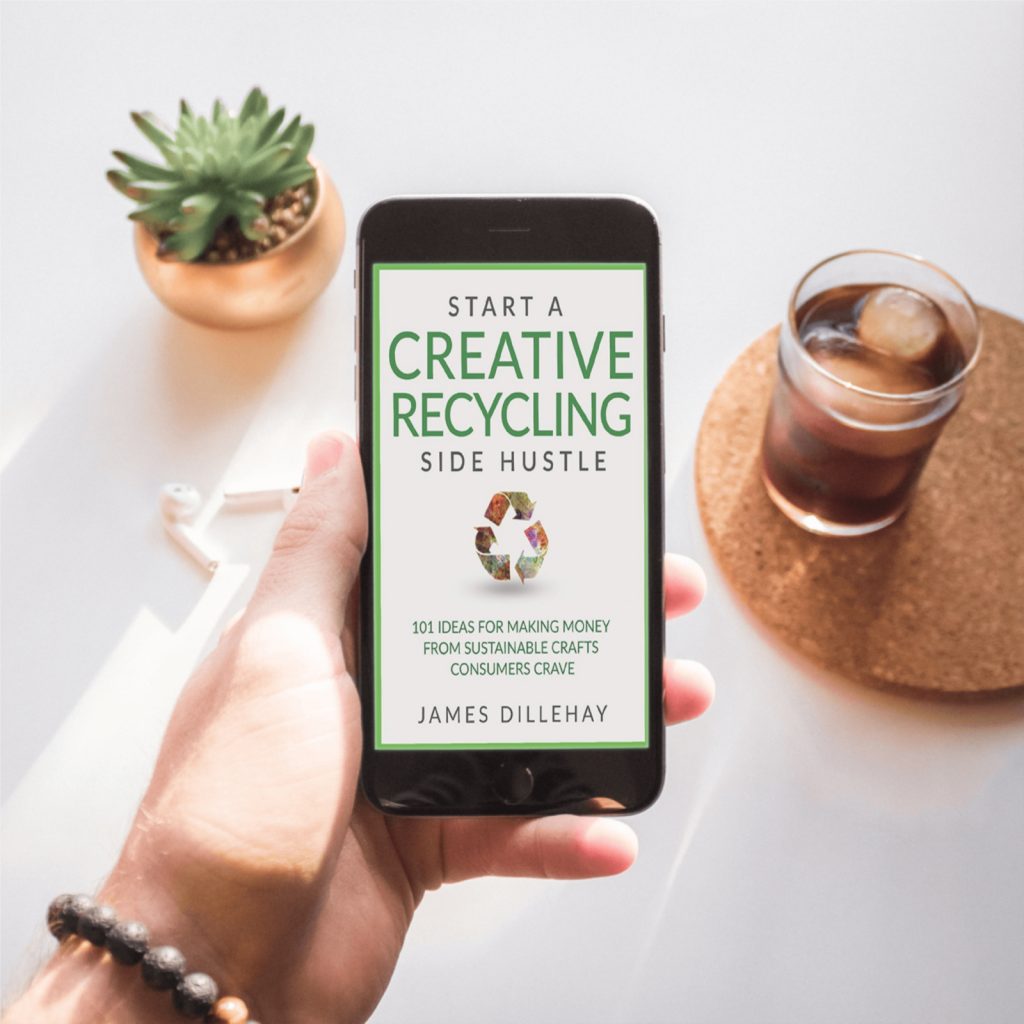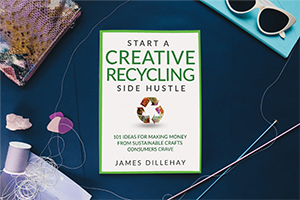Excerpt from Start a Creative Recycling Side Hustle by James Dillehay
Over two billion people use Facebook. They spend an average of thirty-five minutes each day on the site and almost eighty percent of shoppers in the US have found products to buy while on Facebook.
Once you have a personal profile set up on Facebook, you can set up a free Facebook Page for your business. Facebook personal profiles are limited to 5,000 friends you can add. But Facebook Pages can have an unlimited number of likes and followers.
Your Facebook Page
* FB pages let you add content about your products and sell them from the page. You also have access to “Insights” providing visitor data you can’t get from a profile page. You will learn how many people your posts reached, how many new likes you got, how many people engaged with your posts, and more.
* Sell directly from your Facebook Page by enabling a Facebook Shop tab in your page settings. Shoppers can browse your items, make a purchase, and pay for it while remaining on your Facebook Page.
* Alternatively, the Shop tab can link to your other website or your Etsy shop. But sending customers away from Facebook creates an added step they have to take and will lower conversion rates.
* To collect payments, set up an account with a payment gateway like Stripe.com. After your payment account is open, add products in your store. For a detailed video on setting up a Facebook Shop, see http://bit.ly/setupfacebookstore
Posting on Facebook
- You can post to Facebook directly from your Etsy Shop Manager > Marketing > Social media.
- Or use an app that integrates your Etsy or other online store products directly with your Facebook Shop. Shopify, BigCommerce, and other e-commerce platforms will link your item listings on their platform to display on your Facebook Page.
- Getting sales from Facebook means getting visual, big-time. Studies show Facebook users respond more to imagery and video than simple text.
- Post several times a week—at least once a week—consistently from your FB Page, not your personal profile.
- Upload photos of your products, videos of your creative process and attention-getting posts with a mix of video, imagery, and text.
- Post how-to tips on recycling, repurposing, and reusing.
- Video content rules on Facebook. People stay tuned five times longer to videos than they do posts without video. Thirty percent of mobile FB users report that video is their favorite way to find new products.
- Facebook Live videos get six times the interactions as regular videos. FB Live videos rank higher in newsfeeds.
- Post useful tips related to your products. If you make accessories, offer tips like “5 ways to use this ____ to look great in a hurry while helping the planet.”
- Humor is good, but take care not to use jokes that could offend someone.
- When describing your own products, elaborate on how you are helping save the planet in your posts. Cite statistics about landfill waste and how supporting businesses like yours reduces the landfill burden.
Facebook Stories
- When you post to your FB page in the normal way, that post shows up in some, but not all of your viewers’ feeds. As a person’s feed fills up with incoming posts, your message quickly gets lost as newer stories push it down.
- FB Stories appear above your users’ feed and remain there for 24 hours. If you add to your Story several times a day, it keeps your business name in front of your fans instead of it vanishing in the feed.
- Add Stories to your FB page from your smartphone. They can be made up of photos, videos, and text content.
- Stories work best when they convey a “behind the scenes” look into your recycling business. For example, you might shoot a video of you creating a new piece. Or, for fun, completely messing one up. Think of it as reality TV about your business.
“Buy Sell” Groups on Facebook
- FB “Buy Sell” groups for handmade products allow you to post images, product descriptions, and (usually) links directly to your item’s sales page. Some groups number in the tens of thousands members. For example, see Facebook.com/groups/craftsu.
- To find other groups on FB, type “buy sell handmade” or “buy sell crafts” in the search bar at the upper left of any FB page. Then click on the Groups tab to narrow results to only look at Groups. Be sure to read the rules of any group you join before posting.
- At first, you might think the members of these groups are all sellers. However, they do attract buyers who use search terms like “seeking _____” or “anyone make____?”
Facebook Marketplace
- Facebook.com/marketplace/ is FB’s own buy/sell market. It’s used by 800 million people globally each month. Sellers list items for sale. Shoppers browse for bargains. Like with Craigslist, there is no fee to use the marketplace.
- The FB Marketplace displays tons of stuff people are looking to get rid of at low prices. Search results are tailored to your local area.
- A search for “handmade” brought up hundreds of items near me. Most of the listings were pre-owned items. Some were new and priced at the same retail price the seller asks on Etsy.
- Though listing handmade products next to used stuff won’t set your products apart, your item on FB Marketplace gives you a virtual shopping cart for free. You can link directly to your product listing, buyers can pay through Facebook Payments, and you can ship the item or deliver it locally. A big plus: the buyer never has to leave Facebook to complete the transaction.
Facebook Ads and Boost Posts
Sellers have the option to boost their posts or run Facebook Ads. Ads can link directly to a product in your Facebook Store. Many sellers report poor results with “Boosting” a post compared to an ad campaign. But the only way to know what will happen for your items is to test.
Start out with a small daily ad spend budget. Don’t invest more than you are willing to throw away.
Measure your ad results. Tweak and test again. Repeat and expand your budget for ads that pull in sales. Discontinue ads that aren’t profitable.
The above is excerpted from Start a Creative Recycling Side Hustle by James Dillehay


